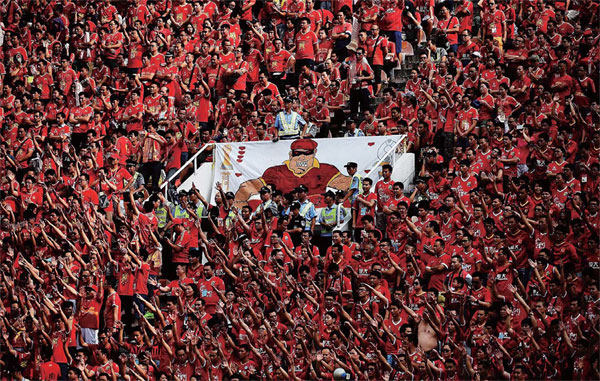With President Xi Jinping’s public enthusiasm toward football, China’s goal to become a new powerhouse in the sport is no secret. One of the essential ways to accomplish that has been creating a competitive domestic league system.
Chinese Super League (CSL), the pinnacle of professional football in China, has become more popular than ever thanks to huge financial investment and influx of international stars.
According to statistics published by Transfermarkt, an online database for international football, the league’s average attendance for each game reached an all time high of over 24,000 in 2016.
Since 2008, the league’s attendance has not only increased by about 80 percent, it has also become the fifth best attended league in the world. The Italian Seria A and French League 1, the two top tier leagues in Europe, have both fallen behind it on that list.
The bubble chart below shows average attendance for different leagues around the world last season.
Which league led the world in attendance last season?
*Note: For most leagues, each season starts in late summer every year and ends in the coming spring. Some leagues in the Americas and Asia, including CSL, start and end in the same year.
In spite of its growing success, the most glamorous and competitive leagues in Europe are still out of the reach for the CSL in terms of attendance. German Bundesliga was the best attended league in the world last season, with more than 41,000 spectators on average attending each game in the stadium, according to Transfermarkt data.
According to statistics released by the German Football League, together with the second division, the two leagues actually broke previous attendance record, collectively attracting more than 19 millions fans.
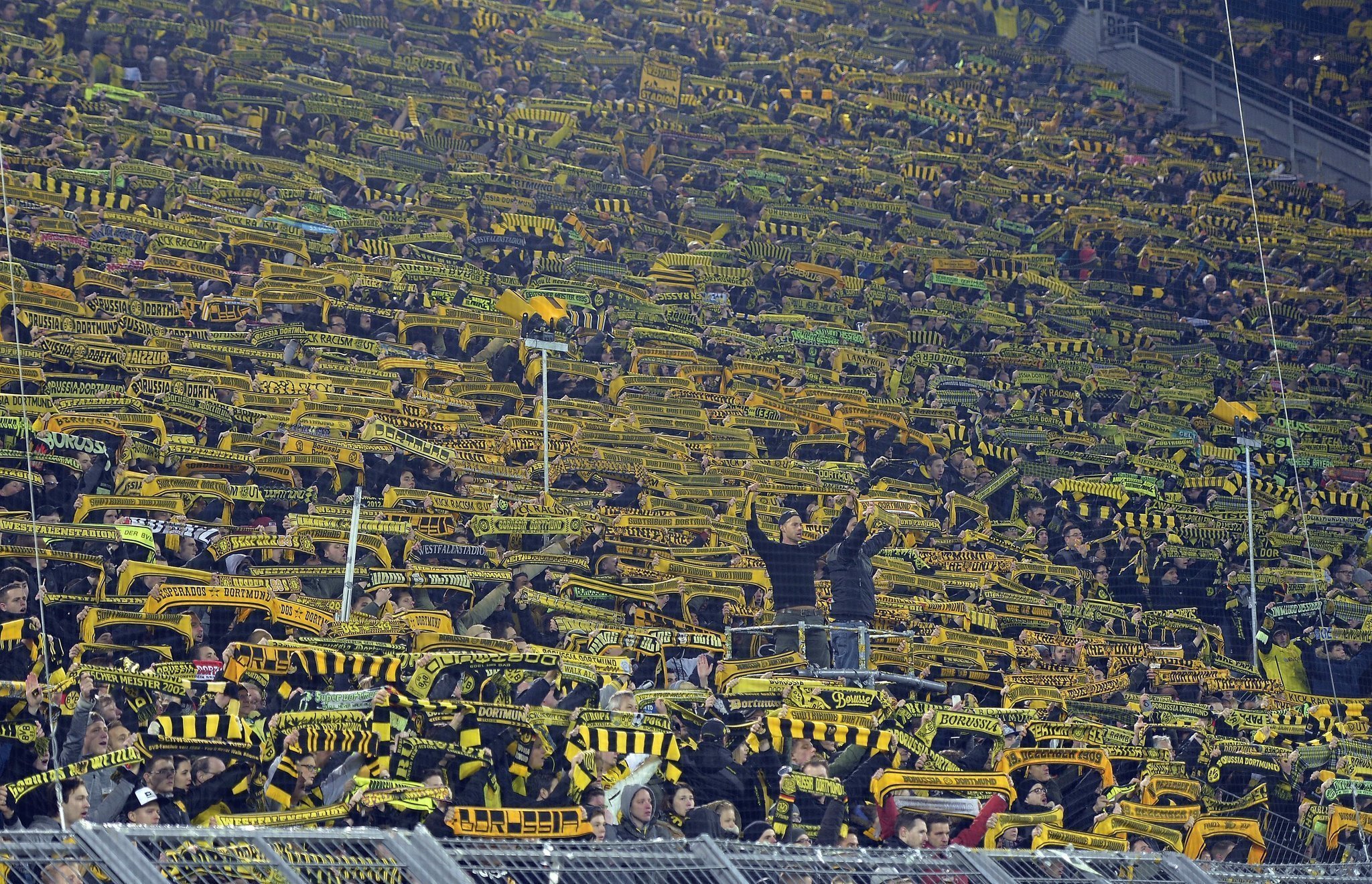
Borussia Dortmund supporters sing “You’ll Never Walk Alone,” a famous sporting anthem, at the Signal Iduna Park stadium in Dortmund, Germany in memory of a supporter died due to heart attack during a Bundesliga game against Mainz on Sunday, March 13, 2016. With a stadium that can accommodate more than 80,00 people packed for almost every home game, an emotional bond has been formed among Dortmund supporters. (AP/Martin Meissner)
The English Premier League and La Liga in Spain took the second and third spot with an average attendance of 35,805 and 28,169 respectively for the 2016/17 season.
Attendance numbers don’t just reflect how many fans are willing to watch the game in the stadium. It also helps determine how much matchday revenue a football club can generate.
Together with broadcast revenue and commercial revenue, which predominantly comes from sponsorship deals and merchandise sales, matchday revenue is one of the major sources of income for a modern professional football club.
Based on a study conducted by Deloitte, Manchester United was the most profitable club in the world in 2016. They managed to generate 689 million euros ($733 million), 20 percent of which came from matchday revenue.
The chart below compares attendance and stadium size for the current top three leagues.
The Big Three: Comparing average attendance of Premier League, La Liga and Bundesliga
Although the Chinese Super League hasn’t been as commercially successful as the top three leagues, it is gradually expanding in terms of scale.
When first established in 2004, the league only consisted of 12 teams. It wasn’t till 2008 that it expanded to the current size of 16 teams, with the two lowest placed teams relegated to second tier each season.
CSL vs. MLS
A lot of similarities can be found between the CSL and Major League Soccer (MLS) of the U.S. and Canada. Both of them are still in early stage of development and are known for acquiring star players.
However, different from China, many MLS teams are attracting fans by building stadiums specific for football. In the early 2000s, football teams in North America were still under the shadow of local ‘American football’ and baseball teams in terms of popularity. As such, they had to compete in stadiums that were not designed for football on matchday. However, since MLS’ inaugural season in 1996, the situation has changed thanks to the construction of 14 football-specific stadiums.
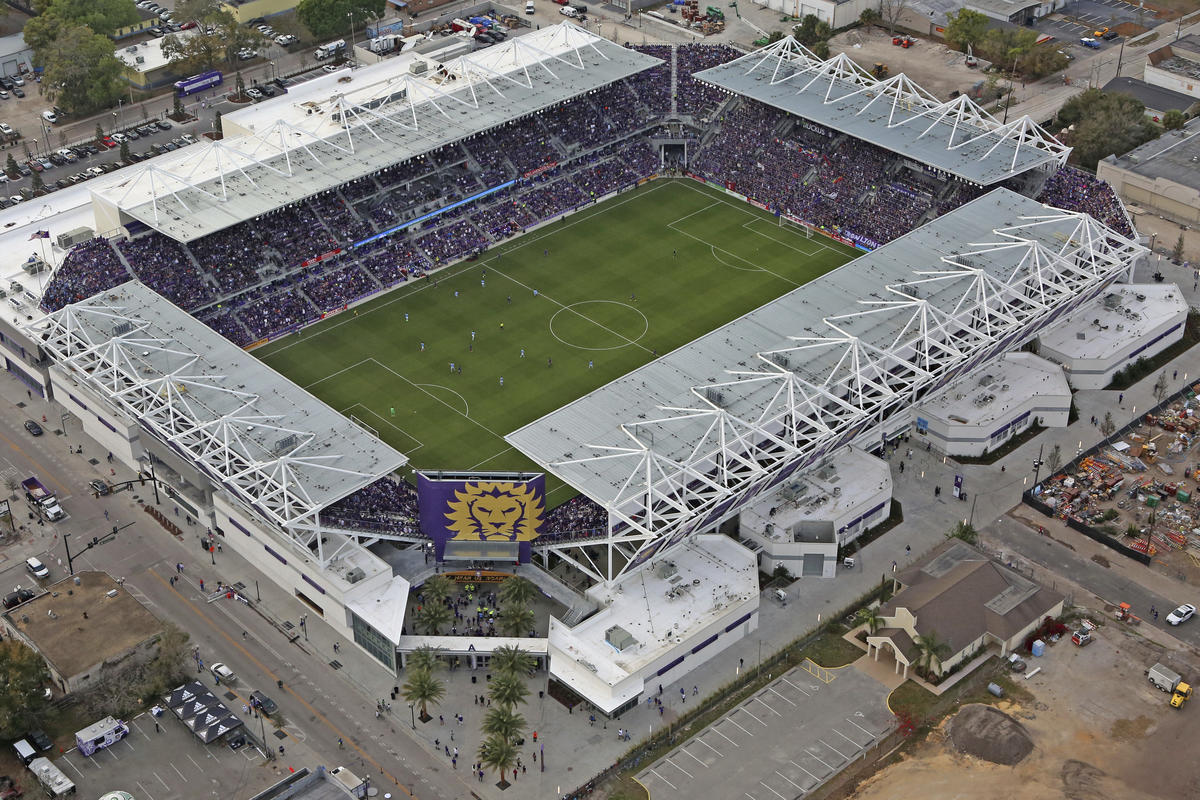
Orlando City SC opens its third Major League Soccer campaign with a 1-0 victory over New York City at the newly constructed Orlando City Stadium in Orlando, Florida on Sunday, March 5, 2017. The $110 million football-specific stadium opened in February 2017 and can accommodate 25,500 spectators. (Red Huber/Orlando Sentinel via AP)
Unique factors for attendance
Taking the top three leagues out of consideration, the Chinese Super League found itself in the midst of the second tier on the attendance list last season. The line chart below compares the trajectory for attendance in these leagues since 2004. CSL became the center of attention by spending big, but different leagues have their own unique factors influencing attendance figures.
Liga MX in Mexico has a huge number of avid fans domestically. In fact, Liga MX ranked fourth in the world for attendance last season. With the unique short-tournament format and relatively cheap ticket prices, Liga MX has been able to attract more than 22,000 fans per game since the 2012/13 season – the highest under its current identity as Liga MX.
Attendance for the Italian Seria A fluctuated between 26,000 and 19,000 according to Transfermarkt data. It dropped to the lowest point during the 2006/07 season, right before the notorious match-fixing scandal known as Calciopoli broke out in May 2006.
Sponsors and relocation
According to the official Chinese Super League regulations, teams are allowed to sell naming rights to sponsors and incorporate brand names into official team names. Combined with investors from various backgrounds willing to step in, this creates a highly dynamic environment in the Chinese Super League that’s no stranger to constant changes.
Taking the teams’ naming as an example, Shandong Luneng Taishan is the only CSL team that has kept its original full name since the league’s establishment in 2004.
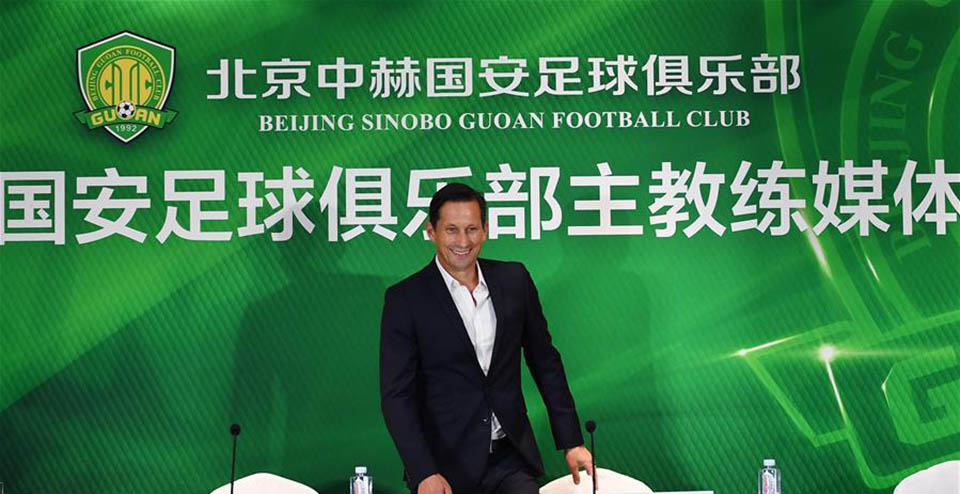
Beijing Sinobo Guoan announces Roger Schmidt as the new head coach of the club at a press conference held in Beijing, China on Sunday, July 3, 2017. The club changed its official club name from Beijing Guoan to Beijing Sinobo Guoan after property developer Sinobo Land Co. bought a 64 percent stake in the club. (Xinhua/Tao Xiyi)
In addition, it’s common for clubs to switch to new stadiums, which is the reason why the stadium capacity in the bar chart below varies – even for the same club over time.
However, most of them didn’t change home ground to accommodate more fans. Some teams, like Shanghai Shenhua in 2007 and Beijing Guoan in 2008, had to use alternative stadiums due to the Olympic Games and the FIFA Women’s World Cup.
Multiple teams have moved to new cities entirely for various reasons. For instance, Beijing Renhe, a club got relegated to the second tier in 2015, has been housed in Shanghai, Xi’an and Guiyang before settling down in the country’s capital.
Attendance grew despite lack of football stadiums
Unlike the MLS, football-specific stadiums are rare in the Chinese Super League. With the exception of Shanghai Greenland Shenhua and Tianjin Teda, every team in the current 2017 season is using a multipurpose sports stadium.
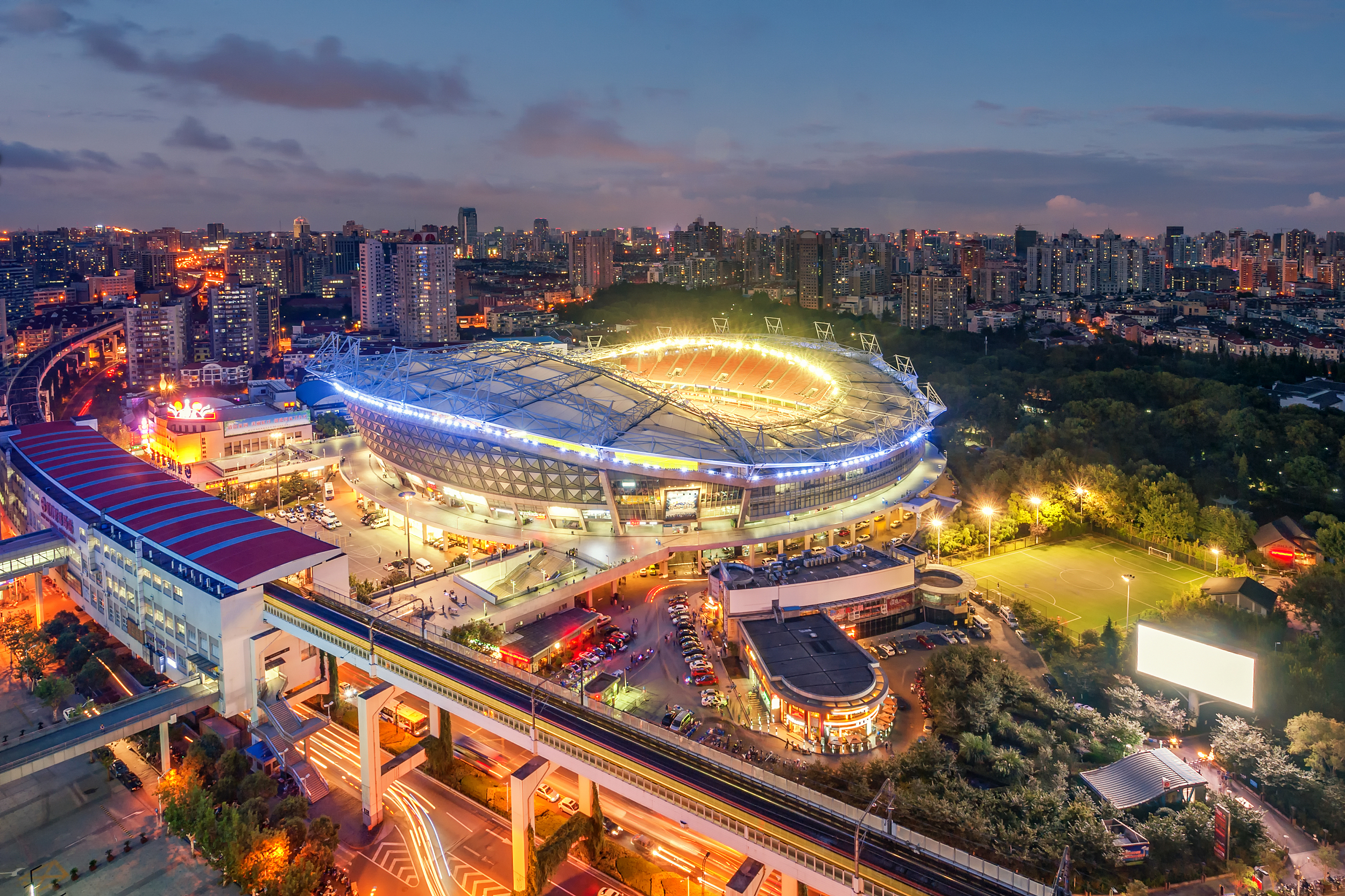
Hongkou Football Stadium in Hongkou district, Shanghai, China has been the home stadium for Shanghai Greenland Shenhua since its reconstruction from Hongkou Stadium in 1999. As the first ever football stadium built in the Chinese mainland, Hongkou Football Stadium is one of the only two football-specific stadiums housing a Chinese Super League team in 2017. (Photo: Getty Creative)
After the 2008 Beijing Olympic Games, China was left with multiple large Olympic venues for outdoor sports spread across the country, offering valuable resources for some teams in the CSL. Jiangsu Suning, Chongqing Lifan and Shandong Luneng Taishan are currently using such venues, all of which are capable of accommodating about 60,000 people for each game.
However, in terms of attendance, most CSL teams have seen significant growth in recent years, according to data published by China Football Institute, an independent organization that compiles statistics related to Chinese football. The chart below compares attendance for every team appeared in the CSL in 2008, 2012 and 2016.
CSL attendance and stadium size since 2008
*Note:
1. Since many CSL clubs have changed both their names and venues over time. For clarity, we have kept each version of the team grouped together in the chart;
2. According to CSL regulations, a team’s full name consists of its official club name, which must be registered with the State Administration for Industry & Commerce and cannot be changed upon registering for the league, and a suffix subject to change every time the club switches to a new sponsor. The names used in the chart below are official club names, not full names.
The prime example of growth is Guangzhou Evergrande Taobao, formerly known as Guangzhou GPC. In 2008, they could barely attract 20,000 fans for each home game. Since its return to the top tier in 2011, the domestic giant has invested heavily to boost the squad, claiming six consecutive CSL titles and two AFC Champions League titles. In 2016, the average attendance at Tianhe Stadium was 44,883 according to Transfermarkt data, doubling the attendance achieved by its predecessor.
Not all teams have benefited from the buzz. For example, Hangzhou Greentown’s attendance dropped from 19,571 in 2007, to 12,566 in 2016. The club was later relegated to the secondary league.
Chinese Super League, like the country’s technology and economy, is developing and expanding at a staggering pace. Perhaps too fast for a consistent environment to form. Seeing large investments and new generations of fans pouring in can be exciting. However, the league is relatively young. Considering the lack of football stadiums, reliance on sponsors and frequent changes of ownership, it may still be on its way to establishing a system best suited for professional football in China.
 CGTN America
CGTN America
